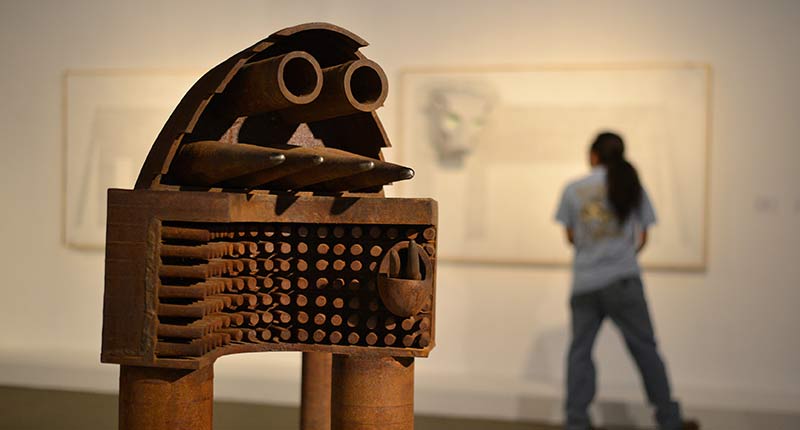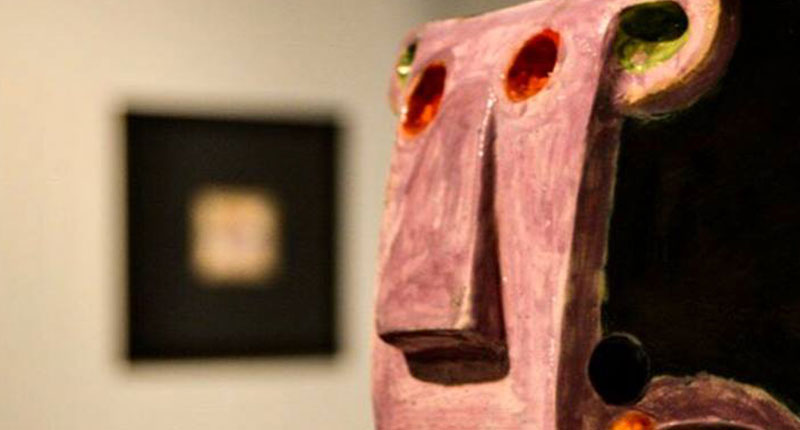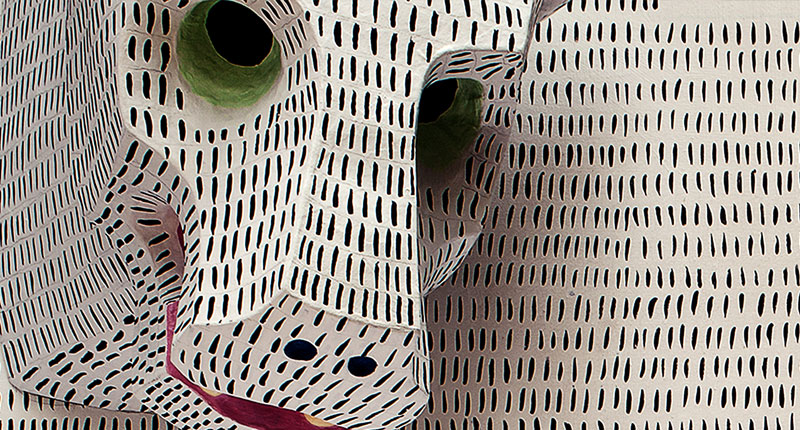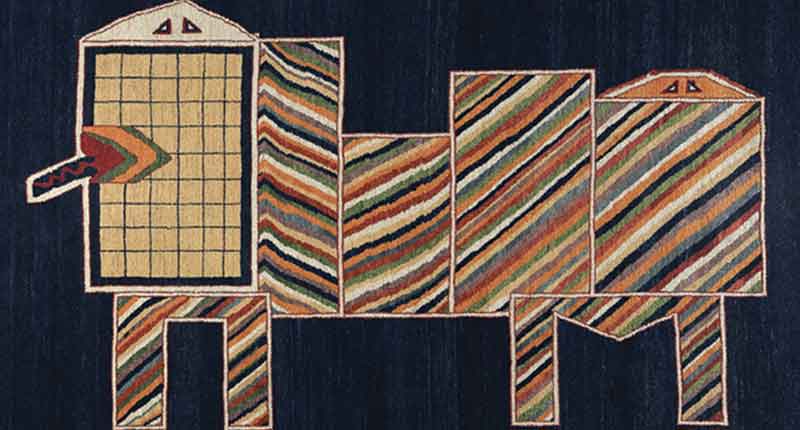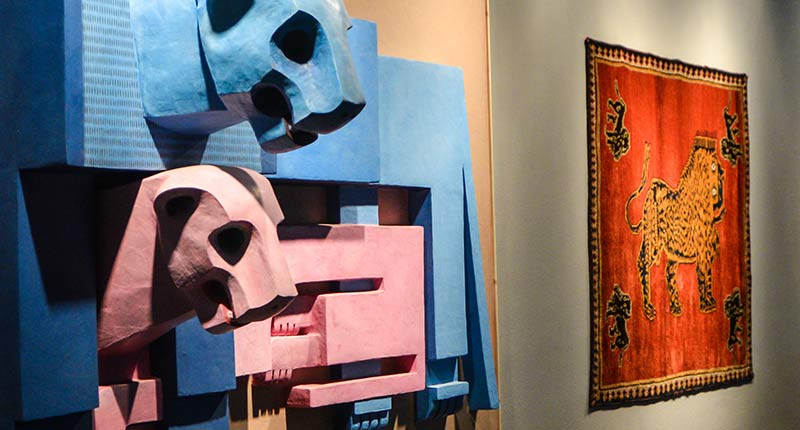"A Lion at Heart: Parviz Tanavoli at TMoCA"
By Katrina Kufer | Harper's Bazaar
17 July 2017
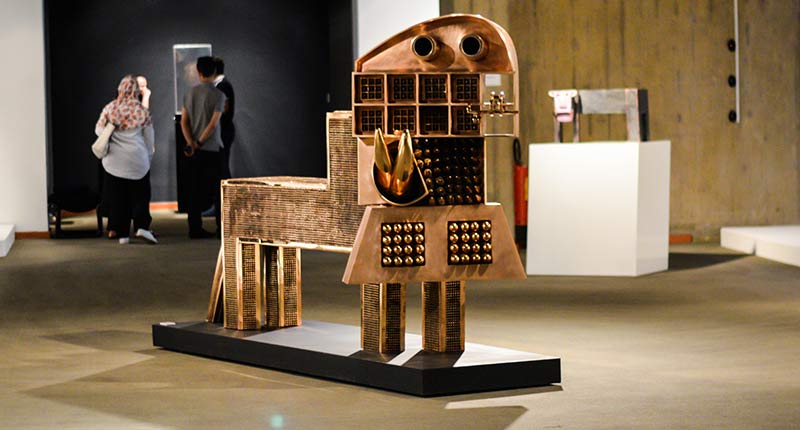
Parviz Tanavoli’s exhibition at the Tehran Museum of Contemporary Art after a 17-year gap marks the accomplishment of one of his dreams as the show harks back to the symbolic and cultural soul of Iran
Known for his iconic Heech symbol used in various mediums, this TMOCA exhibition by the Iranian artist takes a different approach. Around 150 works from the artist, his personal collection and some 5000-year old artefacts from the collections of Iranian museums, focus on the lion, one of two ancient symbols of Iran that have endured for an estimated five millennia. And it all began with a rug.
“It was by pure luck that in 1968 I ran into a lion rug in Shiraz. That lion rug changed my destiny and opened a door to the world of carpets,” Tanavoli recounts of how his passion began. “Soon after acquiring the first lion rug, destiny put more lion rugs on my path. The pace of discovery was so fast that there was virtually not a week that a lion rug from the bazaars of Tehran, Shiraz, or in the tents of the Qashqa’i or the Bakhtiaris did not come into my hands.” As his collection grew, Tanavoli became increasingly aware that the use of the lion as a motif with tapestry went far beyond aesthetic motives. His travels soon resulted in a heightened awareness of the incorporation of lions everywhere, and Tanavoli cites the stone lions standing watch over the tombs in the Bakhtiari and Fars provinces as a particularly moving example.
Organically manifesting in his paintings and sculptures by 1962, as well as his forays into ceramics and carpets, Tanavoli’s lion fixation transformed into a dream to share this deep-rooted cultural element with a broader audience. “It took me four decades to make this dream come true,” he says. Having delved into comprehensive personal research on the topic, Tanavoli shares his knowledge in an exhibition that goes far beyond traditional contemporary showcases to tackle academic and historical foundations. Tanavoli offers a concise history of the lion as follows:
“In Mithraism – the oldest religion of the Persians – the lion is associated with Mithra, as the guardian of the sun. Mehr, the other name of Mithra, signifies friendship and covenant, and it has kept its meaning in modern Farsi. In Zoroastrianism, the pre-Islamic religion of Iran, the three elements of water, fire, and earth were of great respect, and the lion was identified as the guardian of all three elements,” he summarises. “During the Achaemenid (550-330 BC) and Sassanian (224-651 AD) empires, the lion was the symbol of majesty and power, and, with the arrival of Islam in Iran, the lion motif continued to play an important role in the art and culture of the country. With the establishment of the Safavid dynasty in 1501, the lion motif took on a renewed significance. In the framework of Twelver Shi’ism, the official religion of the Safavids, Ali ibn Abi Talib was the Fourth Caliph and First Imam, and thus a leading figure of Shi’ism. He was known as Asadullah ‘the Lion of God.’”
The exhibition has deeper resonances than simply reinforcing cultural values and bringing them to the fore with contemporary means. Parviz Tanavoli and the Lions of Iran is as much an homage to a passion as it is indicative of a cultural continuum of the lion, and more symbolically, of Iran itself. “[Tanavoli] collected all the things people were tired of and had thrown away like locks, keys and seals, and followed the cultural process of Iran, making them his source of inspiration,” said secretary of the exhibition Behzad Hatam in a statement. In hopes that it will create positive reinforcement of the national image, Tanavoli remarks that the intent “is to present a symbol – the lion – that has persevered for 5000 years. This is my way of demonstrating that Iranian culture has survived for millennia and will not disappear. Politics cannot destroy it.”
Parviz Tanavoli and the Lions of Iran runs 3 July-29 August at TMOCA, Tehran. For more information visit tmoca.com

